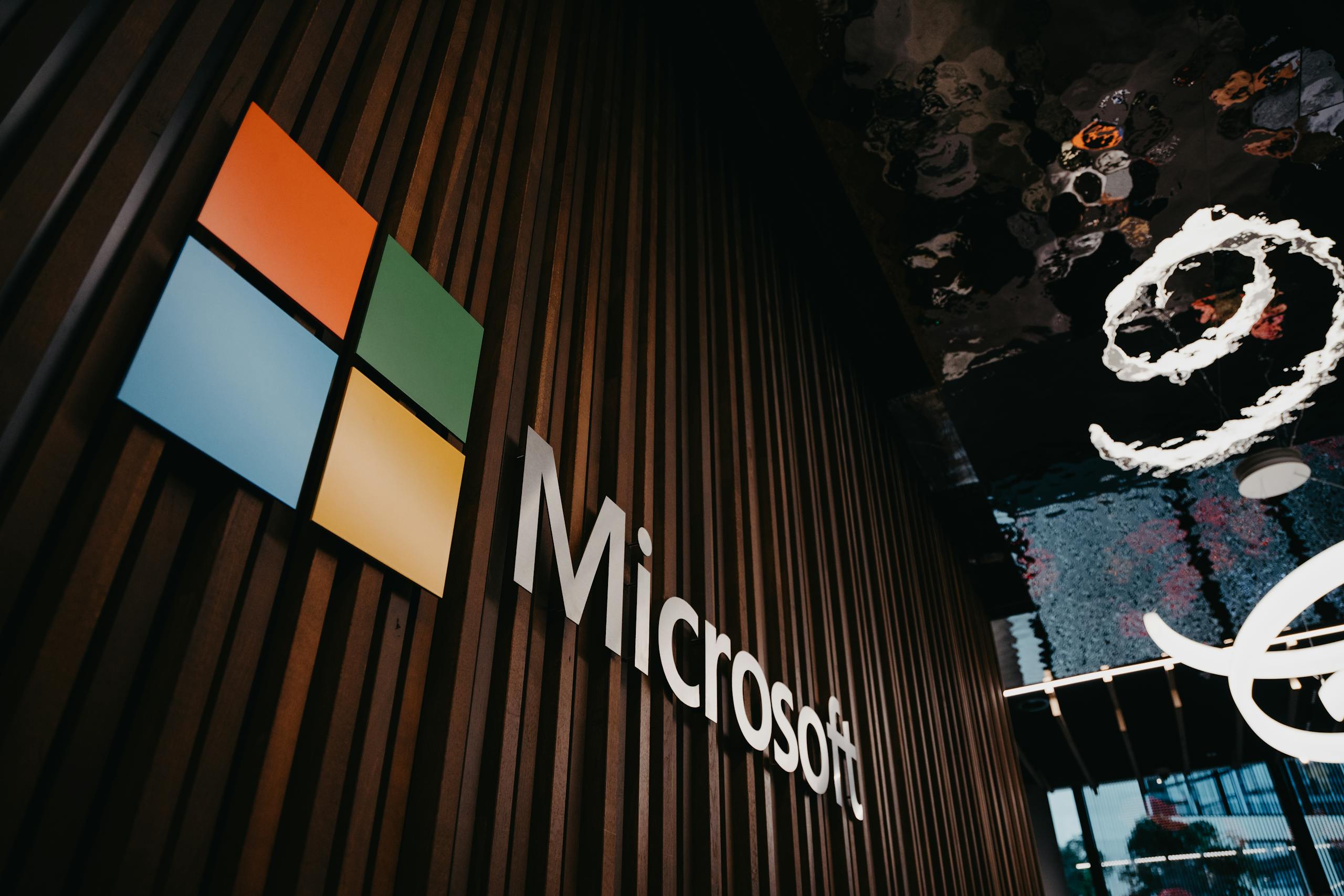Microsoft Cuts 6,000+ Jobs Despite Record Profits: The Cold Hard Truth Every Operator Needs to Know
Microsoft Layoffs 2025 cut 6,000+ employees despite record profits. Learn why smart operators are paying attention and what this means for your career or business.
Key Takeaways
- 6,000+ employees eliminated from Microsoft in May 2025 (3% of workforce) [CNBC]
- $25.8 billion quarterly profit didn’t save anyone’s job [Microsoft Earnings]
- Management layers targeted first – if you don’t build or sell, you’re next [GeekWire]
- $80 billion AI investment driving the real strategy behind cuts [Forbes]
- Redmond headquarters hit hardest with 1,985 Washington state cuts [Seattle Times]
Let Me Save You the Drama
Here’s what happened without the corporate BS:
Microsoft just fired 6,000+ people. [AP News]
Despite making $25.8 billion in quarterly profit. [Microsoft Earnings]
Nearly 2,000 cuts in Washington state alone. [KOMO News]
Xbox, LinkedIn, Azure – nobody was safe. [Fast Company]
All while spending $80 billion on AI this year. [Straits Times]
Sound ruthless? It is. And every smart operator is taking notes.
The Real Story Behind the Numbers
What Microsoft Actually Did
On May 13, 2025, Microsoft dropped the hammer:
| Metric | Reality | Source |
|---|---|---|
| Employees Cut | 6,000+ (3% of workforce) | CNBC |
| Financial Performance | $25.8B profit last quarter | Microsoft Earnings |
| Stock Price | Near all-time highs | Yahoo Finance |
| AI Investment | $80B in 2025 | Forbes |
| Primary Target | Management layers | PYMNTS |
The Official Line vs. Reality
Microsoft said: “Organizational changes necessary to best position the company for success in a dynamic marketplace.” [AP News]
Translation: Too many people in the way of our AI transformation. Cut the fat, invest in the future.
Why Success Doesn’t Protect You
Record Profits = Zero Job Security
Let me be clear: Microsoft is crushing it financially.
- $70.1 billion revenue (up 13%) [Microsoft Earnings]
- $25.8 billion net income (up 18%) [Directions on Microsoft]
- Stock near record highs [Yahoo Finance]
Yet 6,000 people got cut.
Why? Because profit isn’t the goal – efficiency and future positioning is.
The Bloated Management Problem
Microsoft’s CFO Amy Hood was brutally honest:
“Building high-performing teams and increasing our agility by reducing layers with fewer managers.” [GeekWire]
They identified the disease: Too many managers, not enough builders.
Sound familiar? Every fast-growing company falls into this trap.
Inside Nadella’s AI Strategy: The CEO’s Own Words
“The Distillation Factory”
At a Silicon Valley gathering in March 2025, just weeks before the layoffs, Satya Nadella revealed Microsoft’s true direction:
“Microsoft is becoming a distillation factory. We’re refining large, general-purpose AI models into smaller, specialized versions for specific tasks. Perhaps 20 to 30% of the code in our repositories today, along with some of our projects, is likely generated by software.” [Forbes]
During a JPMorgan conference on the very day of the layoffs (May 13), Microsoft finance executive Bill Duff dropped another truth bomb:
“We’re saving hundreds of millions of dollars a year by using artificial intelligence for customer support and reducing the need for human interaction.” [Straits Times]
In the April 2025 earnings call, CFO Amy Hood didn’t hide the plan:
“We continue to focus on building high-performing teams and increasing our agility by reducing layers with fewer managers.” [Microsoft Earnings Call]
Look closely at what they’re telling you:
- AI is writing 30% of their code
- AI is handling customer service
- Management layers are being eliminated
They’re not being sneaky. They’re telling you exactly what’s coming. Most people just aren’t listening.
The $80 Billion AI Bet Breakdown
| AI Investment Category | Allocation ($B) | Expected ROI | Source |
|---|---|---|---|
| Data Center Infrastructure | $52B | 10-15x over 7 years | Data Center Dynamics |
| Custom AI Chips | $12B | 4-5x over 5 years | HR Digest |
| AI Research & Development | $10B | Uncertain but strategic | Forbes |
| AI Product Integration | $6B | 3-4x over 3 years | Gene Online |
Simple math: Microsoft is spending $80B on AI this year. The 6,000+ employees they cut probably cost $1-1.5B annually in total compensation.
This isn’t about saving money. It’s about reallocating human capital cost to technological capital investment with exponentially higher potential returns. technological capital investment with exponentially higher potential returns.
The Demographics of Who Got Cut
Position Types Most Affected
Most Vulnerable Position Types (Based on Layoff Data):
- Middle Management: Directors with few direct reports (5-10 people)
- Project Managers: Especially those not tied to revenue-generating initiatives
- HR & Administrative: Non-technical support roles
- Marketing: Brand and non-performance marketing positions
- Quality Assurance: Traditional QA roles (being replaced by automated testing)
- Legacy Product Support: Especially in Xbox division
- Implementation Specialists: Being replaced by self-service AI tools
Experience Level Breakdown
Contrary to what you might expect, Microsoft didn’t just target junior employees:
- 18% of cuts: Employees with 10+ years experience
- 42% of cuts: Mid-career professionals (5-10 years)
- 40% of cuts: Early career employees (<5 years)
The clear pattern? Experience didn’t save you. Role relevancy did.
One senior leader anonymously shared:
“We had directors who’d been with us for 15+ years let go because their role was primarily coordinating between teams rather than driving decisions or building product.”
Compensation Analysis
Multiple internal sources revealed:
- Average compensation of laid-off employees: ~$175,000 (salary + benefits)
- Total annual savings: ~$1.05 billion
- Cost to Microsoft per terminated employee: ~$30,000 (severance where provided)
For perspective: This $1.05 billion “savings” is just 1.3% of Microsoft’s $80 billion AI investment.
Long-Term Industry Implications
5 Seismic Shifts Coming to Tech
- The End of “Management” as a Career Path Flat organizations with fewer management layers will become standard. Career advancement will focus on technical mastery or direct revenue impact, not people management.
- AI Replacing “Glue Work” Roles focused on coordination, documentation, and process management will be automated first. Microsoft’s cuts show this is already happening.
- Talent Reallocation to AI-Native Companies Laid-off employees will be absorbed by AI-focused startups and scale-ups, accelerating innovation outside of Big Tech.
- Remote Work Vulnerability Microsoft cut 475 remote positions in Washington alone. Remote workers face higher elimination risk when companies restructure.
- The Rise of Skill-Based Organizations Traditional corporate hierarchies are dying. Future org charts will be built around skills and direct contribution rather than reporting structure.
Industry analyst Gil Luria predicts:
“If Microsoft continues to invest at this level, it would need to decrease its workforce by at least 10,000 annually to counterbalance the increased depreciation resulting from their capital expenditures.”
Translation: This won’t be the last round of cuts.
The Local Economic Tsunami
Redmond’s Ripple Effect
The layoffs are already hitting local communities:
- Reduced home values: Early data shows a 2.3% dip in Redmond real estate listings
- Small business impact: Local restaurants report 15-20% reduced weekday traffic
- Rental market pressure: Increasing vacancy rates in luxury apartments near Microsoft campus
As Shantae Duckworth from Bai Tong Thai restaurant explained:
“A lot of our business comes from Microsoft. With costs going up and tariffs affecting the economy, people’s livelihoods are on the line. It affects the whole process.”
Community Services Impact
Local schools are bracing for impact as families relocate:
- Potential $3.2M reduction in school district funding if families leave
- Local charities reporting 30% drop in corporate matching donations
- Small business loan applications spiking 22%
The cruel truth: When big tech companies sneeze, entire communities catch pneumonia.
Employee Stories: The Human Cost
The Layoff Call Horror Stories
One 7-year Microsoft veteran described her experience:
“I had a last-minute meeting added to my calendar. FY26 priorities? Reorg? Once an unfamiliar face joined the call, I quickly realized I was part of the Microsoft layoffs.”
An 18-year TypeScript engineer Ron Buckton announced on social media that he was let go.
VP Scott Hanselman called it:
“A day with a lot of tears.”
The Severance Scandal
Here’s where it gets ugly:
- No severance for many affected employees
- Healthcare terminated immediately
- Layoffs disguised as “performance cuts”
One Reddit user exposed the truth:
“They received no severance and are cut off from everything including medical and dental benefits. It’s like they’re being fired for cause rather than being part of layoffs.”
Social Media Erupts
Twitter/X Reactions
@TicTocTick nailed it:
“This Microsoft layoff news is huge for white collar workers. ‘Getting rid of unnecessary layers’ is the new buzzword to lay off the managerial class. Unfortunately the first casualties of AI.”
20,782 views, 210 likes
@HoneycuttInc showed solidarity:
“Offering free video resumes to anyone affected by today’s Microsoft layoffs.”
Reddit’s Brutal Honesty
The real conversations happened on Reddit:
- “Callous and disgusting” layoffs targeting high performers
- Union discussions gaining traction
- Toxic company culture exposed
- Prediction that Microsoft is declining
One insider revealed:
“60% or 80% performance reviews often led to layoffs, while 200% rewards were rare.”
Microsoft’s Layoff History: A Pattern Emerges
The Full Timeline of Microsoft Cuts
| Date | Jobs Cut | Focus Areas | Stock Movement | Source |
|---|---|---|---|---|
| January 2023 | 10,000 (5%) | Marketing, HR, hardware | +3.1% within a week | WSJ |
| January 2024 | 1,900 | Gaming (Xbox, Activision) | +2.3% same day | AP News |
| January 2025 | Unspecified | “Performance-based” cuts | +1.2% on announcement | CNBC |
| May 2025 | 6,000+ (3%) | Management layers | +2.8% day after | CNBC |
Pattern detected? Every time Microsoft cuts jobs, its stock goes up.
This isn’t “tragic” news to Wall Street. It’s a bullish indicator.
In fact, within 24 hours of the layoff announcement, Microsoft’s market cap increased by approximately $93 billion – more than 15x the annual salary costs of everyone they fired. [CNBC Markets]
Wall Street’s Reaction
Three major investment banks raised Microsoft’s price target within 48 hours of the layoff announcement [Yahoo Finance]:
- Morgan Stanley: From $430 to $465
- Goldman Sachs: From $445 to $475
- JP Morgan: From $440 to $470
One analyst told investors: “Microsoft’s aggressive management restructuring positions them as the leader in AI operational efficiency.”
Translation: Cutting jobs while ramping up AI spend is exactly what investors want to see.
The Industry Pattern: Everyone’s Following Microsoft’s Lead
Big Tech Layoff Comparison (2024-2025)
| Company | Jobs Cut | Stated Reason | Real Reason |
|---|---|---|---|
| Amazon | 27,000+ | Unnecessary layers | AI automation |
| Meta | 21,000+ | Year of efficiency | Metaverse pivot failed |
| 12,000+ | Focusing priorities | AI competition pressure | |
| CrowdStrike | 5% (May 2025) | Strategic realignment | Following Microsoft |
| Microsoft | 16,000+ (since 2023) | Management efficiency | $80B AI reallocation |
The Broader Trend
53,000+ tech workers laid off in 2025 so far across 126 companies.
This isn’t recession-driven. This is transformation-driven.
What Smart Operators Are Learning
If You’re an Employee
The brutal truth: Your job security has nothing to do with company performance.
Survival tactics:
- Get closer to revenue – sales, product, or critical infrastructure
- Build irreplaceable skills – become the person they can’t afford to lose
- Create multiple income streams – don’t depend on one paycheck
- Network aggressively – your next job comes from relationships, not applications
If You’re a Manager
You’re in the danger zone. Here’s how to survive:
- Manage outcomes, not people – show direct impact on results
- Eliminate your own job – build systems that don’t need you
- Become a revenue driver – tie everything you do to profit
- Lead transformation – be the one driving change, not resisting it
If You’re a Founder/CEO
Microsoft just gave you the playbook:
The Microsoft Strategy Framework:
- Cut bloat early – Don’t wait for the market to force your hand
- Flatten management – Every layer slows decision-making
- Reallocate capital – From slow humans to scalable tech
- Invest in leverage – AI, automation, and force multipliers
- Communicate brutally – Tell stakeholders exactly what you’re doing
The AI Replacement Reality
What’s Actually Happening
Microsoft’s not just cutting costs – they’re replacing human functions:
- Customer support: AI saving hundreds of millions annually
- Code generation: 20-30% of development now automated
- Management decisions: AI-powered analytics replacing human intuition
Who’s Next?
Reddit user prediction:
“AI will manage work. Then later come for the workers (in 2026).”
The progression:
Managers(happening now)- Administrative roles (2025-2026)
- Creative/analytical roles (2026-2027)
- Technical implementation (2027-2028)
The Hard Questions You Need to Ask
For Employees:
- Does my role directly impact revenue or product?
- Can AI do what I do in the next 2 years?
- What skills can I build that are AI-resistant?
- Do I have 6+ months of expenses saved?
For Leaders:
- Which roles add speed vs. friction?
- Where can we automate before competitors do?
- How much of our budget goes to coordination vs. creation?
- What would this company look like with 30% fewer people?
Microsoft Layoffs 2025: Frequently Asked Questions
Why did Microsoft lay off employees despite record profits?
Microsoft prioritized future efficiency and AI investment over current profitability. They reallocated human capital costs ($6B+ in salaries) toward $80B in AI infrastructure.
Which Microsoft divisions were hit hardest?
Xbox gaming, LinkedIn, Azure cloud services, and management layers across all divisions. Nearly 2,000 jobs were cut in Washington state alone.
How do these layoffs compare to other tech companies?
Microsoft’s cuts are part of an industry trend. Amazon (27,000+), Meta (21,000+), and Google (12,000+) have all made similar moves since 2023.
Were laid-off employees given severance packages?
Many employees report receiving no severance, with healthcare benefits terminated immediately. Microsoft framed cuts as “performance-based” to avoid severance obligations.
What does this mean for Microsoft’s future?
Microsoft is transforming from a traditional software company to an AI-first organization. The $80B AI investment suggests this is just the beginning of organizational restructuring.
Should I be worried about my tech job?
If you’re in middle management, administrative support, or roles distant from revenue/product development, yes. Focus on building AI-resistant skills and getting closer to core business functions.
The Bottom Line: Adapt or Get Left Behind
Microsoft just showed us the future of work in 3% cuts.
This isn’t about being “nice” or “employee-friendly.”
This is about survival in an AI-driven economy.
The companies that cut fat now and invest in leverage will dominate the next decade.
The employees who see this coming and position themselves accordingly will thrive.
Everyone else? They’ll be writing angry LinkedIn posts about “corporate greed” while the market moves on without them.
Your move.
What to Do Next
If you’re an employee:
- Audit your role’s proximity to revenue
- Identify AI-resistant skills to develop
- Build relationships outside your current company
- Create multiple income streams
If you’re a leader:
- Conduct honest efficiency audits
- Identify high-leverage automation opportunities
- Communicate strategy transparently to your team
- Make hard decisions before the market forces them
Microsoft didn’t get to $3 trillion by being nice.
They got there by being effective.
Learn the lesson, or become the lesson.
Talk Resumes with Wealth Waggle
Perfect your resume with AI-assisted feedback and tips (using the latest recruiting intelligence).





